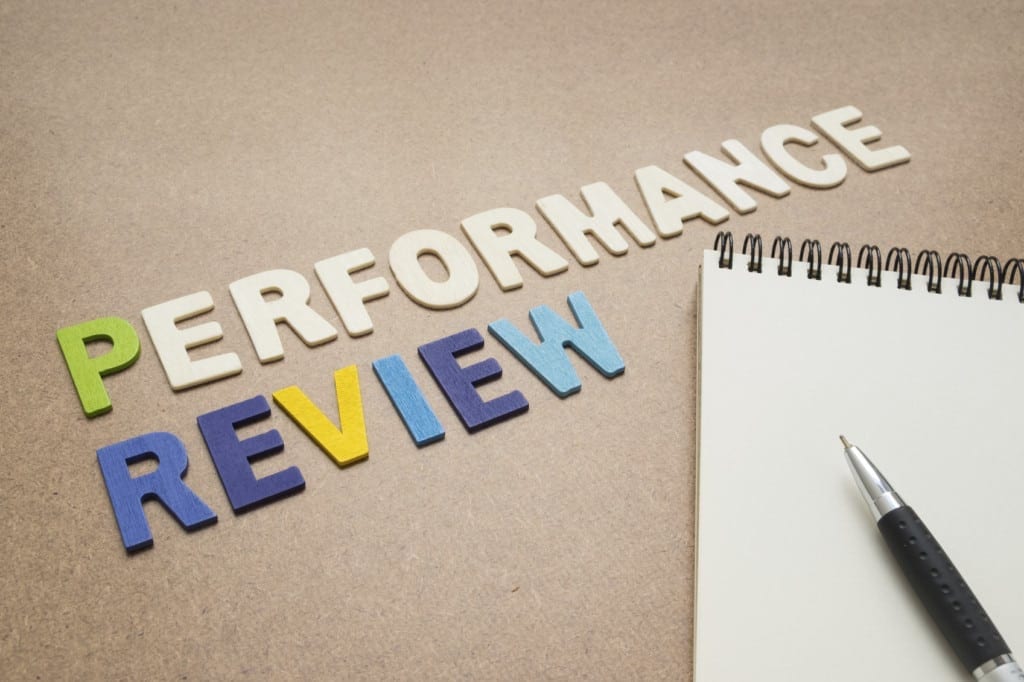Can you feel it? It’s performance review season!
 Managers are buzzing about performance reviews. Unfortunately the anticipation isn’t necessarily positive.
Managers are buzzing about performance reviews. Unfortunately the anticipation isn’t necessarily positive.
Let’s be honest. The review meeting has become little more than a ritual. If it wasn’t for HR’s mandate that every employee must have this annual performance review to document performance for the employee file, annual reviews would never get done. The review has become no more than a veiled attempt to justify paltry pay increases and to produce the legally defensible documentation in case the employee ever needs to be disciplined, counseled, or terminated.
For most organizations, the annual performance review has little if anything to do with performance – past or future. And during difficult times these past two years, many companies cancelled reviews because salaries were frozen. So within the next few weeks, employee performance will be reviewed for the first time in 2 or 3 years. The absence of feedback for 24 or more months adds tension to what is generally a very awkward experience for both the employee and manager.
In nearly all cases, the annual review has little to do with performance but a lot to do with salary. What else would a manager discuss at the annual review if it isn’t money? It’s the once a year sit-down where an entire year of success and failures are boiled down into a few minutes conversation. These so-called performance meetings are carved out of (or maybe more appropriately squeezed into) a busy schedule to chat a bit about the last 12 months. The manager is often rushed and distracted and the employee defensive and anxious.
The bad news is that many organizations still see the once-a-year review as their attempt at performance management. The most common questions I hear being asked is “what can we do to improve our annual review?” or “how can we get all our managers to complete their annual reviews on time?”
What can a small business do to improve its annual employee appraisal process?
1. Automate the process. The paper performance review form is ineffective. Tracking down these employee evaluation forms is an administrative nightmare for human resources departments. So much time is spent administering the annual review that performance feedback and goal setting becomes secondary. In effect, more effort and resources are committed to the process than the result. The first step at improving employee performance management is to stop the paper chase. Set your sights on providing employee feedback, not completing paperwork.
2. Evaluate skills and behaviors that matter. One significant mistake companies make is evaluating performance based on secondary factors. Factors such as attendance and appearance get equal billing and importance with competencies like decisive judgment, getting results, and interpersonal communication. Evaluations and feedback must address skills and behavior that affect performance.
3. Stay focused. Avoid the “sheep-dip” approach where every employee is treated like another. It’s a sure way to turn a performance management event into an irrelevant task. Employee evaluation forms are not meant to be wish lists. In one organization every employee from housekeeping to department directors was evaluated on the same 33 criteria. Another business was proud to show me the 612 different competencies they identified that “aligned” with their strategic goals. Evaluating performance is tough enough without overloading the process with criteria that don’t add value or drive performance. The more criteria, the less time managers will spend critically thinking about individual performance and offering constructive comments. Limit the form and performance feedback to between 5 and 10 core competencies or critical goals and watch the performance review experience improve significantly.
Save time, increase productivity, and eliminate hassles when administering employee performance reviews. Learn more about streamlining your employee performance review. Click here.
